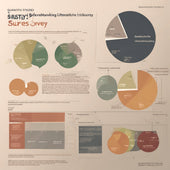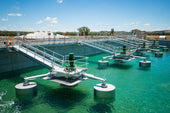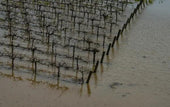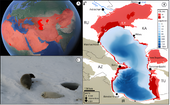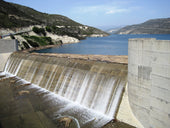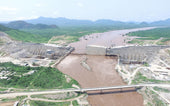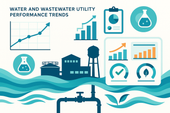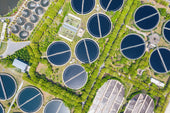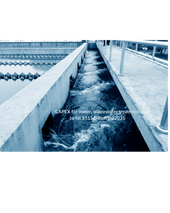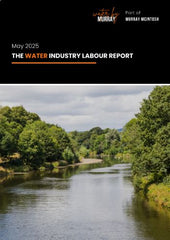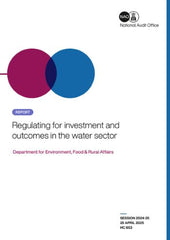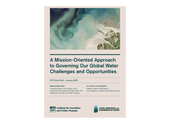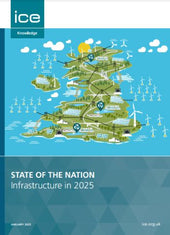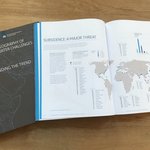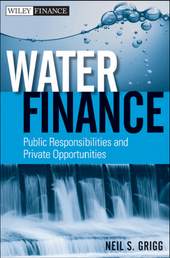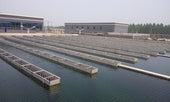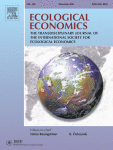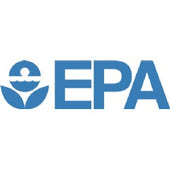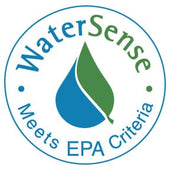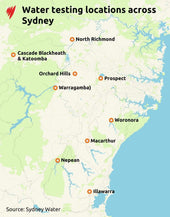
Novel Water Quality Index Reveals Guanzhong Basin Insights
In the vast and ecologically critical Guanzhong Basin of China, securing access to clean and safe groundwater has become a pressing priority, reflecting a growing global concern over water quality in both phreatic and confined aquifers. Groundwater serves as an indispensable resource for agriculture, industry, and human consumption throughout the region. Against this backdrop, a groundbreaking study spearheaded by Nsabimana, Li, Alam, and their colleagues introduces an innovative, integrated-weight water quality index approach designed to revolutionize how scientists and policymakers assess subterranean water health. This study, recently published in Environmental Earth Sciences, offers new perspectives on monitoring and managing groundwater systems threatened by pollution, over-extraction, and climate variability.
The Guanzhong Basin lies in the heart of Shaanxi Province, one of China’s most populous and agriculturally productive regions. Its groundwater resources are stratified into phreatic (unconfined) and confined aquifers, both of which support local communities and ecosystems with vital freshwater. However, rapid urbanization, intensive farming practices, and industrial discharge have increasingly jeopardized the quality of these waters. Traditional water quality evaluation methods have often been limited by their inability to comprehensively integrate multiple parameters or adaptively weigh the relative importance of diverse contaminants. This novel integrated-weight water quality index responds directly to these challenges by incorporating advanced statistical weighting techniques with hydrological data, offering a more nuanced and precise evaluation of groundwater status.
At the core of this new approach is the sophisticated integration of multiple water quality indicators—such as pH, total dissolved solids (TDS), heavy metals, nitrates, and microbial presence—each assigned a dynamic weight based on its ecological and health impact evaluated through entropy weights and analytic hierarchy processes (AHP). This weighting scheme transcends traditional equal-parameter assumptions, enabling a tailored understanding of contamination severity specifically relevant to the Guanzhong Basin’s unique hydrogeological context. The method’s strength lies not only in aggregating disparate data points but in providing a spatially and temporally sensitive index that reflects ongoing environmental changes and human pressures.
Data collection for this extensive study spanned several seasons and involved systematic sampling of both the shallow phreatic aquifers and the deeper confined aquifers. These samples underwent rigorous chemical and microbiological analyses to detect a comprehensive suite of pollutants. High-resolution geospatial mapping techniques complemented laboratory findings to pinpoint contamination sources and pathways. Notably, the research team employed inductively coupled plasma mass spectrometry (ICP-MS) for trace metal determinations and ion chromatography to detail anionic compositions, ensuring unparalleled precision in characterizing pollutant profiles. This meticulous methodology has established robust baseline data vital for future longitudinal studies and remediation strategies.
The environmental implications of this study are profound. Analysis reveals that while the confined aquifers generally exhibit better quality due to their protective geological barriers, certain pockets show alarming signs of contamination, likely attributed to leakage and anthropogenic intrusion along fault lines and fractured strata. Conversely, phreatic aquifers demonstrate widespread vulnerability, with elevated levels of nitrates and heavy metals directly linked to agricultural runoff and industrial effluents. These findings underscore the basin’s pressing need for integrated water management policies that differentiate between aquifer types and target pollution sources with tailored interventions.
Furthermore, this integrated-weight water quality index addresses one of the most complex challenges in environmental monitoring—handling the multidimensional nature of water pollution metrics. By combining entropy and AHP, the index effectively prioritizes parameters by their informational contribution and stakeholder perspectives. This dual approach minimizes subjective bias and enhances decision-making transparency. The result is a replicable and scalable evaluation tool adaptable to other global regions facing comparable groundwater stress, thus extending the study’s significance well beyond China.
Additionally, the research contributes to a broader scientific dialogue around sustainable groundwater management under climate change scenarios. The Guanzhong Basin’s water resources are increasingly susceptible to variability in precipitation patterns and temperature fluctuations, which exacerbate contamination risks through altered hydrological cycles. The adaptive nature of the integrated-weight index allows for the incorporation of climate-related variables in future assessments, supporting resilience planning and underpinning adaptive governance frameworks aimed at safeguarding water security.
The study also highlights the role of human activities in accelerating groundwater degradation. Intensive agricultural practices involving excessive fertilizer use introduce high concentrations of nitrates and phosphates into shallow aquifers. Industrial operations contribute heavy metals such as lead, cadmium, and arsenic, which pose significant public health risks. Urban expansion brings challenges related to waste disposal and leakage from infrastructure. Understanding the spatial distribution of these pollutants through the integrated-weight index offers critical insights required for targeted remediation efforts and regulatory enforcement.
In a broader societal context, ensuring the quality of groundwater influences public health, economic productivity, and ecological integrity. Contaminated drinking water is a known vector for diseases and long-term health complications, disproportionately affecting vulnerable populations. Crop yields and regional food security depend heavily on water quality, as soil contamination and poor irrigation resources degrade agricultural outputs. Aquatic ecosystems supported by groundwater-fed springs and streams face disruption from altered chemical balances. This multifaceted impact demands a holistic monitoring and management approach, precisely what the integrated-weight index strives to provide.
An intriguing aspect of the study is its utilization of modern data analytics and geoinformatics combined with classical hydrology, embodying the interdisciplinary collaboration necessary for contemporary environmental challenges. Geographic information systems (GIS) facilitated the spatial interpolation of water quality data, revealing contamination hotspots. Machine learning algorithms were tested to refine parameter weighting, opening pathways for future enhancements to the index and automated water quality assessment systems. Such technological synergy enhances responsiveness and precision, laying a groundwork for “smart” water management infrastructures.
The dissemination and practical application of these findings are equally crucial. The research team emphasizes engaging local governmental bodies, water authorities, and community stakeholders through workshops and interactive platforms. By translating complex scientific outputs into actionable guidelines and user-friendly decision-support tools, the study bridges the gap between academic research and real-world water governance. This approach increases the likelihood of policy uptake, investment in pollution control measures, and community-led monitoring initiatives.
Critically, this water quality index method also supports compliance with international water quality standards and sustainable development goals (SDGs), particularly Goal 6: Clean Water and Sanitation. Its adaptability means it can be aligned with World Health Organization (WHO) guidelines and national regulations, facilitating harmonization of water monitoring practices and enhancing cross-jurisdictional water resource stewardship. The potential for use in environmental impact assessments and urban planning further amplifies its relevance.
Looking forward, the authors suggest several avenues for expanding the application of the integrated-weight water quality index. These include integrating isotopic tracers to better understand groundwater recharge sources and contaminant transport, incorporating socio-economic data to factor in human vulnerability and resource dependency, and scaling up the framework for regional and national groundwater surveillance networks. Such developments would deepen insight into the complex interactions shaping water quality and support more robust, evidence-based management decisions.
Innovative research such as this highlights the urgency and opportunity embedded in groundwater protection. The Guanzhong Basin experience stands as a microcosm of global challenges, where water scarcity and pollution converge to threaten sustainable development. The integrated-weight water quality index is a crucial step toward smarter, more responsive groundwater monitoring capable of informing effective interventions. As the planet confronts escalating environmental pressures, tools like these will be indispensable in securing safe, reliable water supplies for generations to come.
In conclusion, the work by Nsabimana, Li, Alam, and colleagues marks a significant advancement in hydrogeological science and environmental management. By blending rigorous chemical analysis, mathematical sophistication, and spatial technologies, their integrated-weight water quality index approach offers a comprehensive, adaptable means of evaluating groundwater conditions. This innovative methodology not only enhances our understanding of aquifer contamination dynamics in the Guanzhong Basin but also sets a new standard for global groundwater quality assessment techniques. It embodies a critical scientific leap toward achieving resilient and sustainable water resource stewardship worldwide.
Subject of Research: Assessment of phreatic and confined groundwater quality in the Guanzhong Basin, China using a novel integrated-weight water quality index.
Article Title: Assessing phreatic and confined water quality in the Guanzhong Basin, China: a novel integrated-weight water quality index approach.
Article References:
Nsabimana, A., Li, P., Alam, S.M.K. et al. Assessing phreatic and confined water quality in the Guanzhong Basin, China: a novel integrated-weight water quality index approach. Environ Earth Sci 84, 260 (2025). https://doi.org/10.1007/s12665-025-12249-6
Image Credits: AI Generated




